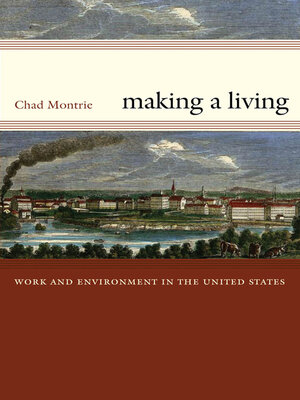
Sign up to save your library
With an OverDrive account, you can save your favorite libraries for at-a-glance information about availability. Find out more about OverDrive accounts.
Find this title in Libby, the library reading app by OverDrive.



Search for a digital library with this title
Title found at these libraries:
| Library Name | Distance |
|---|---|
| Loading... |
In an innovative fusion of labor and environmental history, Making a Living examines work as a central part of Americans' evolving relationship with nature, revealing the unexpected connections between the fight for workers' rights and the rise of the modern environmental movement.
Chad Montrie offers six case studies: textile “mill girls” in antebellum New England, plantation slaves and newly freed sharecroppers in the Mississippi Delta, homesteading women in the Kansas and Nebraska grasslands, native-born coal miners in southern Appalachia, autoworkers in Detroit, and Mexican and Mexican American farm workers in southern California. Montrie shows how increasingly organized and mechanized production drove a wedge between workers and nature — and how workers fought back. Workers' resistance not only addressed wages and conditions, he argues, but also planted the seeds of environmental reform and environmental justice activism. Workers played a critical role in raising popular consciousness, pioneering strategies for enacting environmental regulatory policy, and initiating militant local protest.
Filled with poignant and illuminating vignettes, Making a Living provides new insights into the intersection of the labor movement and environmentalism in America.
Chad Montrie offers six case studies: textile “mill girls” in antebellum New England, plantation slaves and newly freed sharecroppers in the Mississippi Delta, homesteading women in the Kansas and Nebraska grasslands, native-born coal miners in southern Appalachia, autoworkers in Detroit, and Mexican and Mexican American farm workers in southern California. Montrie shows how increasingly organized and mechanized production drove a wedge between workers and nature — and how workers fought back. Workers' resistance not only addressed wages and conditions, he argues, but also planted the seeds of environmental reform and environmental justice activism. Workers played a critical role in raising popular consciousness, pioneering strategies for enacting environmental regulatory policy, and initiating militant local protest.
Filled with poignant and illuminating vignettes, Making a Living provides new insights into the intersection of the labor movement and environmentalism in America.







